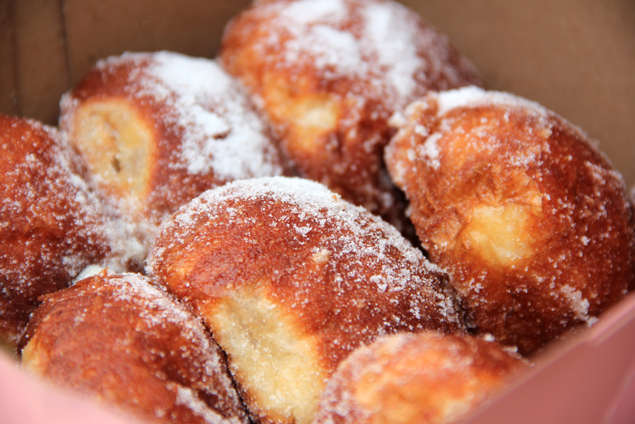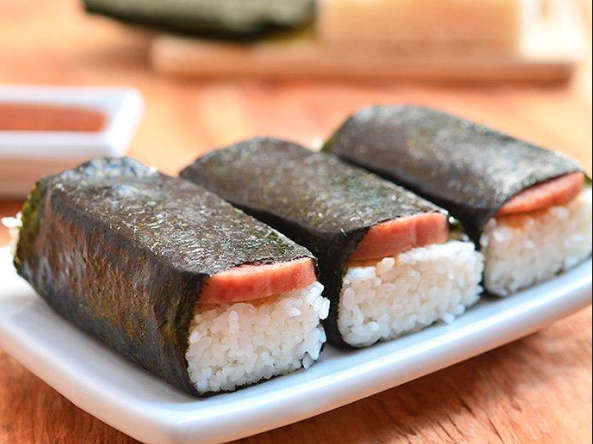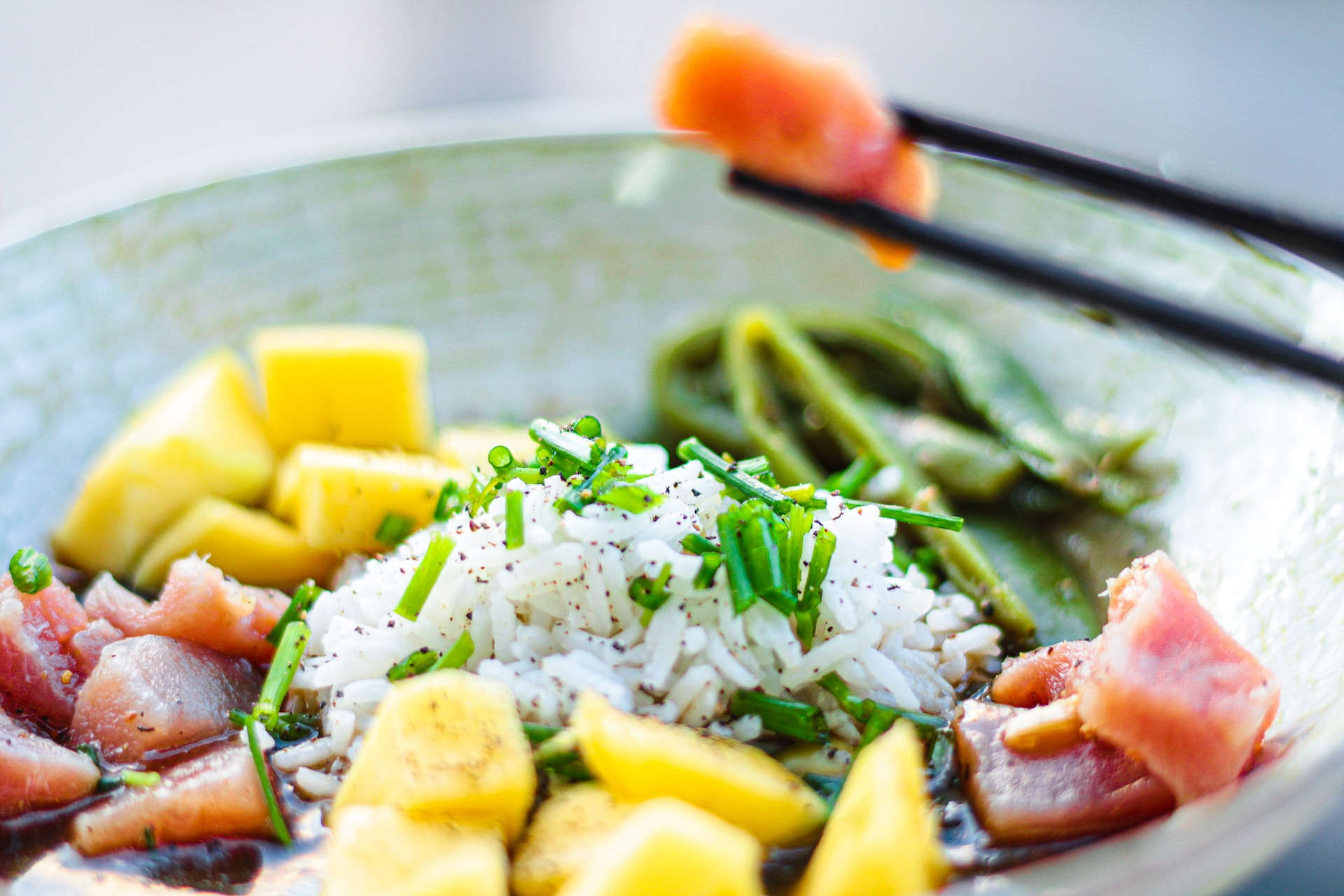
Local Food
If you really want to dive into your vacation trying the food that the locals eat is the best way. Sit down with a plate lunch and talk story or attend a luau and watch fire dancers as you sample some poi and kalua pork.
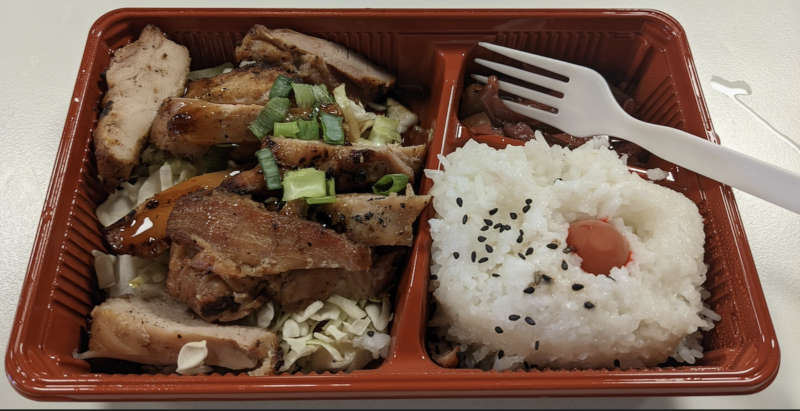
Bentos
Box lunches, or what the locals call Bentos, are a fun little assortment of foods that you can grab-n-go. Few of you that haven`t tried a bento may, at first, have been thinking it was a Hawaiian term. The word bento derives from the Japanese language and translates to a decorated lunchbox and is sometimes compartmentalized to separate the food. In fact, if we go back to the late 1800s, the bento was introduced in Hawaii during the sugar plantation days; Japanese workers would bring their lunch to work in wooden boxes that held all their different types of foods.
In modern Bentos, the wood has been opted out for simpler plastic containers and rubber bands with chopsticks. They are pre-made to just pick up and some of the most common ingredients are teriyaki chicken, katsu chicken, Korean chicken, spam, hotdog, Portuguese sausage, baked fish, and salmon teriyaki. Rice is a staple diet here in Hawaii so it`s no surprise that almost every bento you see is going to come with a good serving of it. If you are a big fan of sushi, we have got a lot of that as well. What`s interesting is that the food that is put together in the Bentos is reflective of the cultural influences back then; you had plantation workers from different parts of the country such as Portugal, China, Philippines, Korea, and of course Japan.
The diversity is the reason you see a fusion of various dishes all over Hawaii and now you can enjoy it conveniently in a bento box that is ready to go. It is a popular choice for students before heading to school, people who need a quick meal before work, and visitors who are looking for something to eat on the road. My recommendation is to get them early in the morning as the ingredients are made fresh each day. Well, now that you got a good idea of what a bento is, the next step is to try it out!
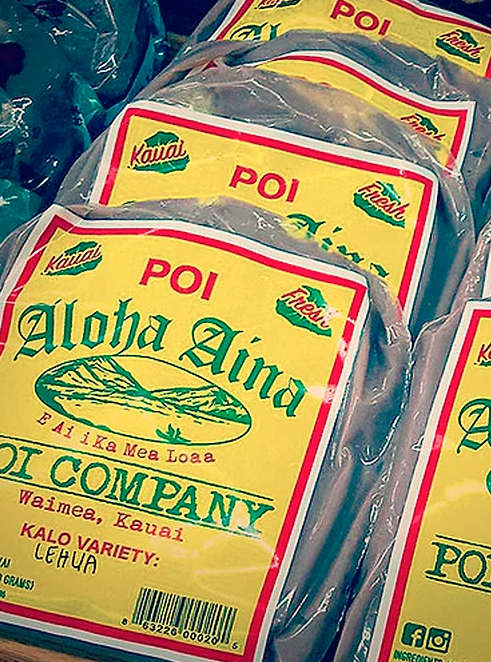
Aloha Aina Poi Company
E Ai I Ka Mea Loaa, which translates to eat what you have and be satisfied.
That is the motto of Aloha Aina Poi Company. For those that aren`t too familiar with traditional Polynesian foods, poi is a product of kalo, or taro, a plant that is considered a staple delicacy in Hawaiian culture. Its significance goes beyond being a tasty dish; in ancient Hawaii, it is believed to be the greatest life force of all foods.
Aloha Aina Poi Company is based in Waimea; their kalo products are straight from the farm to the table. It is a process that promotes the type of sustainable lifestyle the people of Hawaii once lived. Kaina Makua, in a recent interview with Kauai Now, briefly explains the process as taking a year and a day; 12 months to grow it, and a day to prepare it for consumption. In the interview, Kaina also refuses to label the company as his own, instead, he describes it as the “peoples” company; at the end of a long day`s work, he looks to pay the farmers more while providing a low-priced product for the consumer. Yes, that makes margins thin, but taking in large profits was never Kaina`s primary goal. Hawaii was built on the working hands of its people, he wants to reinvigorate the once thriving kalo farming culture, which is the foundation and mindset Aloha Aina Poi Company is built on.
You may find Aloha Aina Poi at some of Kauai`s local grocery stores or take a trip to West Kauai and buy some directly. There`s no better place to try some traditional poi than right here in Hawaii. Just like all foods, it won`t be everyone`s favorite, but some things you have to try at least once.
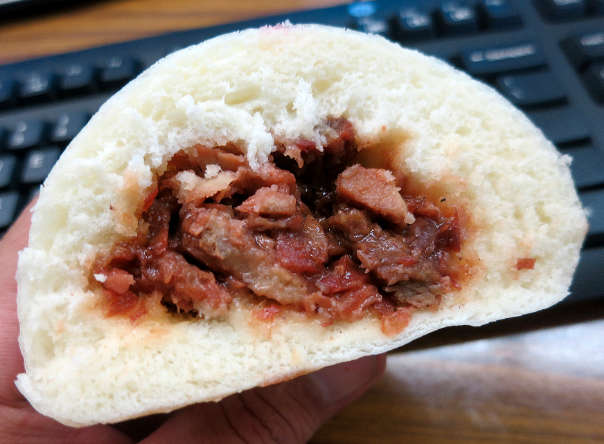
Manapua
Brought to Hawaii by Chinese immigrants, manapua is yeast dough filled with savory pork filling. The roll is steamed or baked. Its name comes from the Hawaiian name meaning delicious pork thing. You will find manapuas throughout Hawaii from dim sum restaurants to grab-and-go convenience stores like 7-Elevens. Char siu park is still a popular flavor; there are new fillings of curry, sweet potato, and even pizza.

Kimchi
Kimchi is a Korean favorite. Originally, kimchi was a mixture of cabbage and salt that was fermented in underground jars as a way to store vegetables for the cold winter months around the 7th century. On the Hawaiian sugar plantations, families made batches of kimchi to eat with almost every meal. Today, kimchi is served as a side dish at many Hawaiian restaurants.

What is Local Food?
Plate Lunch: Plate lunch is Hawaii`s answer to fast food, usually served with an entree, white rice, and macaroni salad. Some of our favorites are from the local fish markets, grocery stores, and food trucks.
Luau: If you have not been to a luau, you should. They offer a great overview of Hawaii`s past and present and a good history of the local food. Here you will try kalua pork, poi, and lomi salmon. Call us if you want recommendations on a good luau.
Pupus: The word pupu will make any five-year-old chuckle, however in Hawaii, pupu means appetizer. Originally of Chinese origin, pupus used to consist of small meat and seafood dishes, today it is a general term for any appetizer. Typical pupus would be chicken wings, poke, potstickers, teri beef, and spare ribs.
Saimin: Saimin noodle and broth dish originating from China and influenced by Hawaiian immigrant groups. Typically accompanied by char sui, green onion, fish cake, and wontons, just to name a few. It is true, sometimes we substitute ramen or a cup o noodles to get our saimin fix, however, when we really want true saimin we know where to go. On Kauai, Hamura Saimen is legend. Tiptop Cafe has a good saimin as well as the new Eating House 1849 by Roy Yamaguchi if you want a more fine dining experience. Or if you want to try fried saimin, at Bobbies in Waimea.
Poke: Ahi Poke is the most commonly known poke, fresh raw cubes of Ahi mixed with sea salt, seaweed, kukui oil, sesame oil, Maui onion, and soy. There are many different Ahi Poke combinations as well as, tako (octopus), shrimp, and salmon poke, just to name a few. Most fish markets and grocery stores have an excellent poke. Be sure to stop by the Pono Market in Kapaa.
Musabi: A popular snack food that consists of grilled spam placed on a rectangle of rice and wrapped in nori (seaweed). Found at most grocery, convenience, and liquor stores by the checkout or in a warming rack. Spam is traditional but many other combinations exist, hot dog, teri chicken, egg, and spam. Some of our favorites are at the Pono market, Foodland, Lawai mini-mart, and the Salt Pond Country Store.



